A recent study by Okolie, et al, (2024) titled “Assessment of the global Copernicus, NASADEM, ASTER and AW3D digital elevation models in Central and Southern Africa” published in Geo-spatial Information Science, by Taylor & Francis group shows that Copernicus DEM displayed superior accuracy in certain scenarios while ASTER and NASADEM were better suited for other landscapes.
“
There are varying accuracies of global Digital Elevation Models across Central and Southern Africa, highlighting Copernicus DEM’s superiority in certain CONDITIONS. – Okolie, et al, (2024)
The article explores a thorough evaluation of the vertical accuracies of four prominent global Digital Elevation Models (DEMs): NASADEM, Advanced Spaceborne Thermal Emission and Reflection Radiometer (ASTER) GDEM, Copernicus GLO-30, and Advanced Land Observing Satellite (ALOS) World 3D (AW3D), through the comparison with LiDAR ground truth data. Focusing on a range of landscapes across Central and Southern Africa, including urban, agricultural, mountainous, and forested areas, the study scrutinizes the performance of these DEMs across diverse terrains and land cover types, while considering factors such as tree cover and topographic parameters. The results highlight variations in DEM accuracy, with the Copernicus DEM demonstrating superior performance under certain conditions, while ASTER and NASADEM exhibit better accuracy in others.
How the Study was Conducted
Grids with a substantial number of data points were generated for Cape Town and Gabon. Elevation data was extracted from LiDAR and global DEMs, and these elevations were recorded. The DEMs were cleaned to eliminate negative elevation values. The Three-sigma rule was applied to identify and filter outliers, and elevation points over water bodies were excluded. Both qualitative (visual) and quantitative analyses were employed. Absolute vertical accuracy was determined by comparing satellite DEMs with the reference DEM (LiDAR). Height Error Maps (HEMs) were created to visually estimate height error across different landscapes. The relative accuracy of the DEMs was ranked based on calculated accuracy measures.
What the Authors Found
The authors of the study found the global Digital Elevation Models (DEMs) evaluated—NASADEM, ASTER GDEM, Copernicus GLO-30, and ALOS World 3D (AW3D)—showed varying levels of vertical accuracy. Dense LiDAR ground-truth data was employed to validate the DEMs’ accuracy across diverse landscapes in Central and Southern Africa. The authors found that the accuracy of DEMs differed based on environmental factors such as tree cover and topographic parameters. In addition, the authors posits that Copernicus DEM displayed superior accuracy under certain conditions, while ASTER and NASADEM were better in other scenarios.
Why is this Important
Digital Elevation Models (DEMs) find extensive application in environmental research, spanning climate modeling, hydrology, and land cover analysis. The precision of elevation data is pivotal in comprehending terrain features, water flow dynamics, and ecological phenomena. Within infrastructure planning, dependable elevation data holds significant importance. It aids in the development of infrastructure, urban layouts, and disaster management strategies, enabling engineers to accommodate elevation fluctuations effectively in designing roads, bridges, and buildings.
In the realm of natural resource management, DEMs facilitate the evaluation of resources like forests, wetlands, and agricultural areas. Accurate elevation data informs decisions regarding land usage and conservation endeavors. In the context of assessing the impacts of climate change, precise elevation information becomes indispensable. It allows for the anticipation of coastal erosion, flooding, and habitat alterations, given the fluctuations in sea levels and weather patterns associated with climate change. For risk assessment purposes, DEMs play a crucial role in evaluating hazards such as landslide susceptibility, flood forecasting, and seismic risk analysis. Accurate elevation data contributes significantly to mitigating potential disasters.
In scientific research domains like geomorphology, glaciology, and geology, DEMs serve as invaluable tools for analyzing landscape transformations, glacier retreat patterns, and tectonic activities. In essence, ensuring the accuracy of DEMs fosters well-informed decision-making across a diverse array of fields, ranging from environmental preservation to infrastructure advancement.
What the Authors Recommend
The authors recommend the following:
- When choosing a Digital Elevation Model (DEM) for specific applications, consider the environmental context. Different DEMs perform better under varying conditions. For instance:
Copernicus DEM displayed superior accuracy in certain scenarios.
ASTER and NASADEM were better suited for other landscapes. - Before using DEMs, validate their accuracy against ground-truth data (such as LiDAR). Calibration and adjustment may be necessary to improve reliability.
- Understand the limitations of DEMs. Factors like tree cover, terrain complexity, and data resolution impact accuracy. Be cautious when interpreting elevation data.
- Consider regional variations. DEM accuracy can differ significantly across different geographic regions. Local calibration or correction factors may enhance reliability.
- Collaborate with other researchers and institutions. Sharing groundtruth data and calibration techniques can improve overall DEM accuracy.
In conclusion, the comprehensive evaluation of global Digital Elevation Models (DEMs) conducted in this study sheds light on their varying accuracies across diverse landscapes in Central and Southern Africa. With Copernicus DEM demonstrating superior performance under specific conditions, while ASTER and NASADEM proving more suitable for other scenarios, understanding these nuances is crucial for informed decision-making across multiple fields. By recognizing the importance of DEM accuracy, validating data against ground truth, and acknowledging regional variations and limitations, researchers and practitioners can harness the full potential of DEMs to advance environmental studies, infrastructure planning, natural resource management, and scientific research, ultimately contributing to more resilient and sustainable development.





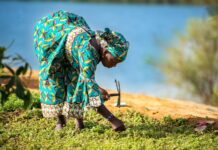

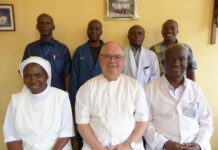
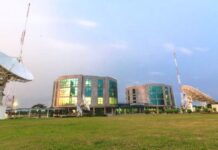
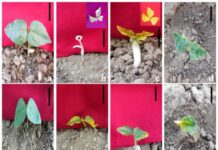
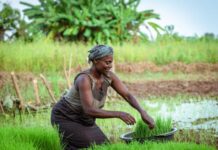

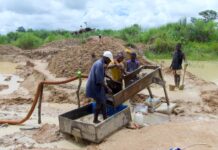



 The African Research (AR) Index is a comprehensive scholarly directory and database focused explicitly on journal publishers that publish and disseminate African research.
The African Research (AR) Index is a comprehensive scholarly directory and database focused explicitly on journal publishers that publish and disseminate African research.

